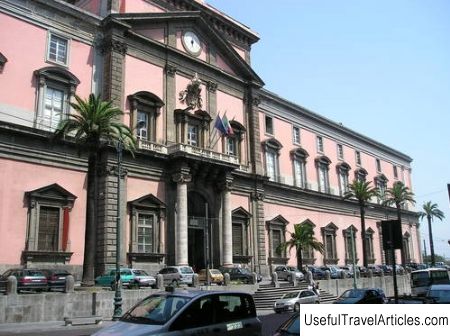Herculaneum in Italy, Naples resort
Rating: 8,0/10 (1290 votes)  Herculaneum is an ancient Roman city located in the Italian region of Campania, on the coast of the Gulf of Naples, near the modern city of Ercolano. Along with the cities of Stabia and Pompeii, Herculaneum ceased to exist in connection with the eruption of Vesuvius in August 79. Today Herculaneum is on the UNESCO World Heritage List. According to the myth, Herculaneum was erected by Hercules himself. However, archaeological excavations carried out here have proved that the first settlement on this site appeared in the 6th century BC. Further, the city came under the influence of the Greeks and was used as a port, due to its proximity to the sea. Most likely the city was named by the Greeks – it was first mentioned in writing by the ancient Greek philosopher Theophrastus as Heracleon. From the 4th century BC. Herculaneum was ruled by the Samnites, and in the 1st century BC. the Romans took possession of it. In 89 BC. the city received the status of a municipality. The earthquake that happened in 62 caused serious damage to the city. In the afternoon of August 24, 79, the eruption of Vesuvius began. At about one o'clock in the afternoon, there was a powerful ejection of volcanic ash from the mouth of the volcano, which formed into a cloud and soon fell on Stabia and Pompeii. The first phase of the eruption did not cause serious damage to Herculaneum, since it was located to the west of the volcano, and the ash immediately moved to the southeast under the influence of the wind. The eruption did not stop even after dark. At midnight, pyroclastic flows rushed towards Herculaneum. At one o'clock in the morning, red-hot lava reached the city, few of the remaining residents died instantly. The discovery of Herculaneum happened quite by accident. At the beginning of the 18th century, the peasant Ambrogio Nucherino, while digging a well, came across marble fragments. The Duke Emmanuel-Maurice of Lorraine was notified of the find, who immediately bought a plot of land around the well and started excavations. During the excavations, 9 statues were found, which the Duke presented to his patrons. In 1738, excavations were resumed on the initiative of Charles III. In the course of the work, valuable finds were discovered – bronze and marble statues that were seized and sent to the royal residence of the city of Portici. Soon, the Herculaneum Museum was opened in the city. In the middle of the 18th century, a library of scrolls was discovered, called the Villa of the Papyri. In 1765, gas escaped in one of the adits, after which the excavations were stopped and the entrances were sealed. The next series of excavations was started in 1828 by Francis I. Until 1855, the excavation was directed by Carlo Bonucci. In 1869, Victor Emmanuel II resumed excavations, but after 6 years the work was closed again.    We also recommend reading Vesuvius Volcano in Italy, Naples resort Topic: Herculaneum in Italy, Naples resort. |




